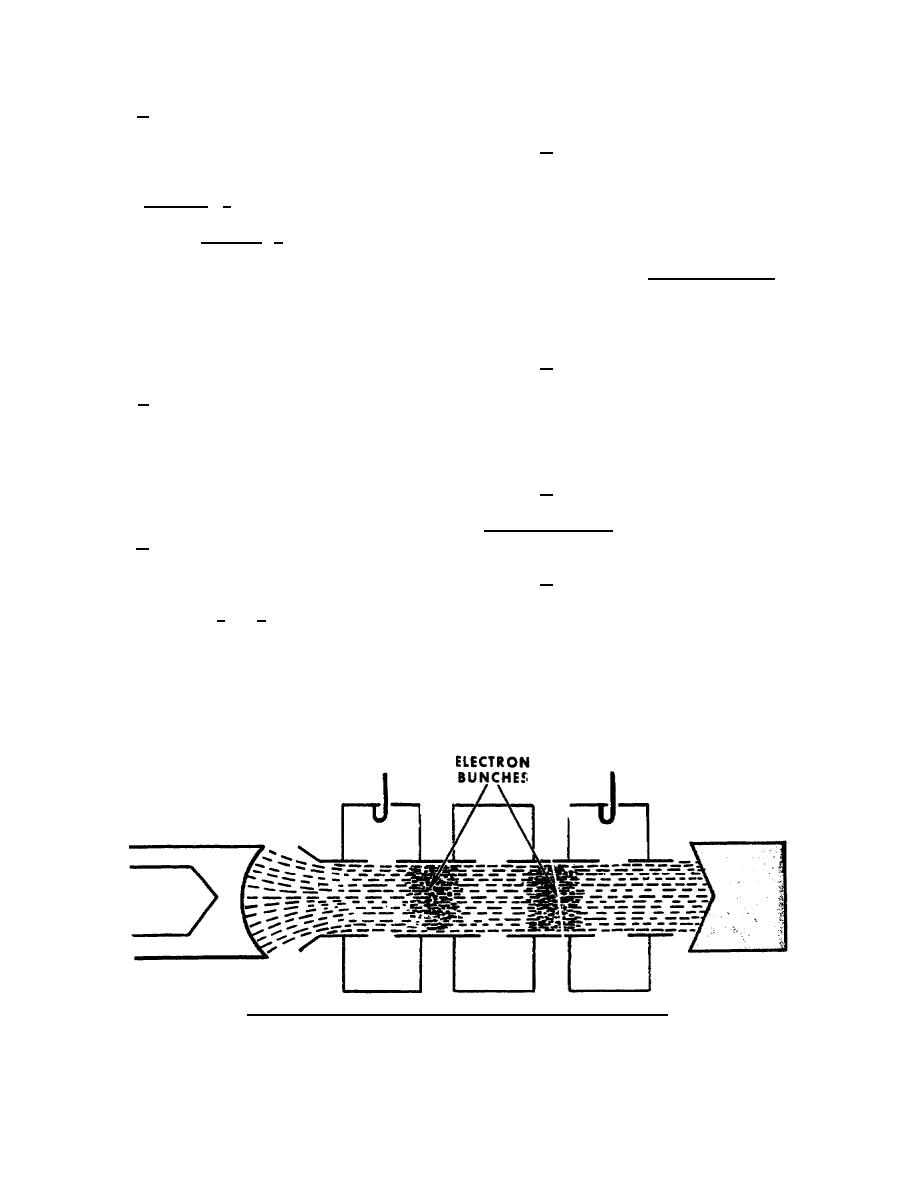
e. All of the electrons emitted by the
1-47.
ELECTRON DENSITY MODULATION
cathode have a constant velocity until they reach the
RF field across the drift tube gap. The interaction
a. First, we'll consider the beam electrons
between the electrons and the RF field results in
in the drift tube region between the first and second
beam electron velocity changes. The beam electron
gaps in the drift tube. These are the gaps surrounded
velocity decreases (c, above) because the beam
by the input and middle cavities. The faster
electrons loose energy to the RF field. The beam
(accelerated) electrons overtake the slower
electron velocity increases (d, above), because the
(decelerated) electrons at some time after passing the
electron beam gains energy from the RF field. The
first gap. When the faster electrons catch up with
RF input voltage causes the RF field across the first
the slower electrons, electron bunching occurs.
gap in the drift tube. Therefore, the RF input voltage
These bunched electrons undergo another velocity
starts velocity modulation. This is true because the
change while passing the second gap which causes
first gap in the drift tube is where the beam electrons
an action similar to that of the first gap.
undergoes the first velocity change, while flowing
through the drift tube.
b. As in the region between the first and
second gap, electron bunches occur between the
f. The middle and output cavities also
second and third (last) gaps. In this region, the
cause velocity modulation of the beam electrons.
electron bunch has a greater density because the
And, like the input cavity, middle and output
middle cavity RF field is stronger than the input
cavities require excitation. However, instead of
cavity RF field.
excitation by the RF input, the middle and output
cavities are excited by the velocity modulated
c. In reality, the beam electrons bunch and
electrons passing through the drift tube (para 11).
debunch periodically. This process is called electron
density modulation. Density modulation is a result
g. After they are excited, the middle and
of velocity modulation.
output cavities have varying RF fields.
The
interactions between the beam electrons and RF
d. The diagram in figure 47 shows that the
fields of these cavities are similar to that described
electron density modulation begins after the
for the input cavity (c and d above). Each cavity RF
electrons pass the first gap in the drift tube. Notice
field causes some electrons to accelerate, some to
that the electron bunch at the output cavity has the
decelerate; while others are unaffected. This means
greatest density. The output cavity, therefore,
that beam electrons, passing an RF field, will either
absorbs most of the energy from the electron beam
move faster, slower or remain unchanged. Now let's
because of the successive bunching effect.
consider what happens to the electrons that have a
change in velocity.
Figure 47. Density modulated electrons form electron bunches.
344 L1
45



 Previous Page
Previous Page
